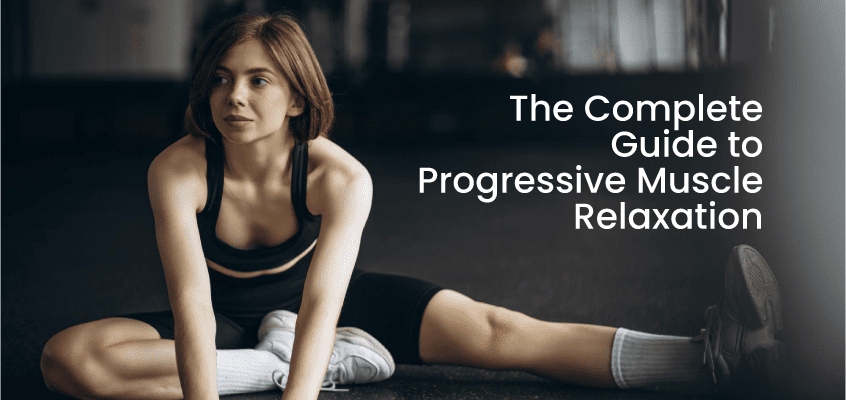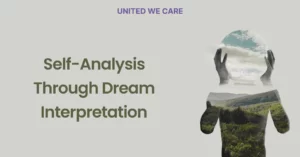We may experience stress occasionally, a normal phenomenon; however, continuous pressure buildup over a long period can cause muscle tightness. In 1930, Edmund Jacobson, an American physician, introduced progressive muscle relaxation as a physical technique to reduce stress and anxiety. The procedure is also known as Jacobson’s Muscle Relaxation Technique. It aims to release muscular tension and manage stress’s physical consequences.
What is progressive muscle relaxation?
Progressive muscle relaxation is a therapy aimed at reducing anxiety in a patient.
Jacobson observed it is possible to relax a tensed muscle by repetitively tensing and relaxing the body’s major muscle groups. This technique requires tightening and easing the major muscle groups in typical patterns. The process helps with the following:
-
Insomnia
-
Hypertension
-
Migraine headaches.
Progressive muscle relaxation is an effective therapy for multiple conditions that may result from stressful situations. Regular practice of this therapy is helpful for effectively controlling stress and anxiety, and it also helps minimize chronic pain and offers relief from sleep disturbances.
Physicians may recommend progressive muscle relaxation as supportive as a supportive practice in combination with standard treatment options for relief from digestive problems, headaches, and cancer-related pain.
Benefits of progressive muscle relaxation
The progressive muscle relaxation technique is easy to practice, and you can learn it with proper guidance. There are several evidence-based benefits of progressive muscle relaxation, such as the following:
Relieves anxiety and stress
Progressive muscle relaxation relieves anxiety because of a stressful condition and is also helpful for treating generalized anxiety disorder. The therapy improves our sense of well-being by reducing the symptoms of stress and anxiety. It helps us cope with stressful situations that may lead to anxiety and depression.
Relieves sleep disturbances
Since progressive muscle relaxation eases muscles, it effectively treats sleep disturbances, and it is also helpful for improving the quality of sleep. In addition, the therapy relieves chronic pains such as neck pain, lower back pain, and cancer-related pain.
Relieves migraine headaches
Progressive muscle relaxation has a beneficial effect on stress, which may trigger migraine attacks. Regular technique practice can reduce the severity and frequency of migraine attacks.
It helps manage high blood pressure.
Systolic blood pressure denotes the blood pressure when the heart beats. Progressive muscle relaxation improves systolic blood pressure and can be used to support the medical management of high blood pressure.
How to employ progressive muscle relaxation
Follow the steps below to employ progressive muscle relaxation. Focus on different muscle groups after practising diaphragmatic breathing with closed eyes for a few minutes:
-
Lower extremities: We should sit or lie to begin progressive muscle relaxation. Tighten the muscles in your toes and feet for 5 seconds. Slowly release the tension over 10 seconds for all eight steps, keeping the timings for anxiety at 5 seconds and relaxing for 10 seconds. Slowly release the pressure over 15 seconds. Feel the stress melting away as you relax the muscles.
-
Leg muscles: Increase the tension in your calf muscles and quadriceps. Maintain this position for 15 seconds before slowly releasing the pressure.
-
Buttocks: Contract the buttocks for 15 seconds and slowly relax the muscles over 20 seconds.
-
Abdomen and chest: Contract your abdominal and chest muscles; slowly release while focusing on relaxation.
-
Muscles in arms and hands: Pull your hands to your chest by clenching the fists and tightening all arm muscles. Stay in this position for 15 seconds before releasing slowly.
-
Muscles in shoulders and neck: Raise your shoulders upwards to your ears while simultaneously tightening your neck muscles. Remain in this position and count up to 15, then slowly relax back to the original work while counting up to 30.
-
Jaw muscles: Constrict your jaw muscles for up to 15 seconds and release them slowly over 30 seconds.
-
Forehead muscles: Concentrate on your forehead muscles as you squeeze them tightly. Hold the same position for about 15 seconds and then release slowly.
Tips to get the most out of progressive muscle relaxation
One day at a time
Making progress one day at a time is essential to get the most out of progressive muscle relaxation therapy. We should set aside up to half an hour daily to practice this technique; this will help you make therapy part of your daily routine.
Be comfortable
The progressive muscle relaxation technique does not mandate a particular position. The aim is to be comfortable and in a distraction-free environment. Switching off your phone will help you avoid distractions. Wearing comfortable and loose-fitting clothing also helps.
Diaphragmatic breathing
Close your eyes and feel a calmness of mind while breathing deeply through your nose. Your stomach should rise while breathing. Exhale slowly through the mouth by drawing the belly button toward your lower back. Repeat this up to five times. Use this method as a warm-up before practising this technique.
Focus on relaxation
Concentrate on the relaxation you get while releasing the tensed muscles in each muscle group. Imagine your mental stress slowly melting away as each muscle relaxes.
Manage sleep disturbances
Practising it before going to bed helps treat insomnia effectively. The therapy can help you fall asleep quickly and improve sleep quality.
Audio recordings
Several relaxation audios and video files are available on YouTube and other media platforms. You can use these to create a calm environment while practising progressive muscle relaxation.
Conclusion
Following a pattern of alternatively tensing and relaxing various muscle groups is the hallmark of progressive muscle relaxation. The therapy attempts to minimize the physical effects of mental stress and anxiety on the human body. Advanced muscle relaxation therapy helps you adopt relaxation skills and develop a greater awareness of your body.
Regular progressive muscle relaxation helps ease stress and anxiety by releasing physical tension. The therapy has many advantages, including improving sleep patterns, relieving migraine attacks, managing chronic pain, and improving systolic blood pressure. It is a technique to reduce muscle tension associated with anxiety and stress.UnitedWeCare is a health platform that offers people mental support by connecting them with expert psychologists and counsellors. Contact us today to begin your journey towards a stress-free life!
| [1] | K. Liu, Y. Chen, D. Wu, R. Lin, Z. Wang, and L. Pan, “Effects of progressive muscle relaxation on anxiety and sleep quality in patients with COVID-19,” Complement. Ther. Clin. Pract., vol. 39, p. 101132, 2020. |
| [2] | C. R. Carlson and R. H. Hoyle, “Efficacy of abbreviated progressive muscle relaxation training: A quantitative review of behavioural medicine research,” J. Consult. Clin. Psychol., vol. 61, no. 6, pp. 1059–1067, 1993. |





